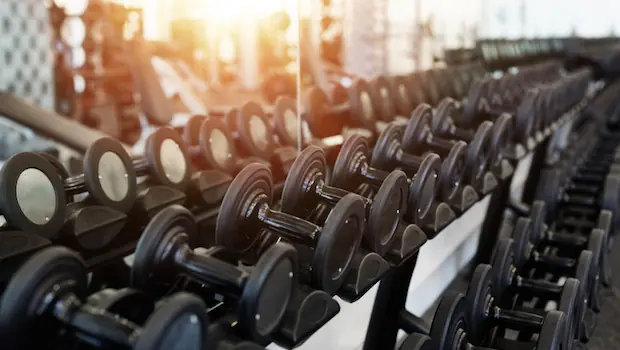
So you've been hitting the gym, taking classes, or doing bodyweight workouts for a while now, and suddenly you're not seeing any more changes in your body. Your muscles aren't growing, and a lot of the moves you've been doing seem easy now.
The likely culprit: You've hit a plateau because you're not lifting enough weight. Maybe you grab the three-pound weights you use in barre class to do curls while weight training, when you could easily lift 10-pounders. Or maybe you've been going to strength training classes for six weeks, but you're still picking up the same dumbbells.
"As Bikram Choudhury, the founder of Bikram yoga, once said, 'If you can, you must,'" says Rob Sulaver, founder and CEO of Bandana Training. So the question becomes: How do you know much weight you actually can lift?
What to Expect When Lifting Heavier
First, let's get one thing straight. You're not going to bulk up overnight. While some people would love to hear that increasing the amount of weight will get you ripped and jacked, others, especially women, fear this outcome.
Regardless, this won't happen. Bodybuilders and gym rats spend hours, weeks, and months focusing on growing their bodies and strengthening their muscles to look a certain way, Sulaver explains. Women don't have the hormone profile to pack on a lot of muscle—but they will increase lean body mass, decrease fat, and enhance self-confidence.
The reality: Lifting heavier will challenge and change your body for the better. And the way in which you do it—the amount you increase by, the exercises you're doing, the rep scheme you're following—can help tailor the results.
Your Game Plan
1. Start small.
Determining the right weight depends on what workout you're doing—whether it's something you've been doing for a while or if it's brand new to you. If you've never done an exercise before, Sulaver recommends a warm-up self-assessment.
"Start with 50 percent less than what you might expect to lift, and do a few reps with that," he says. For example, if you normally lift 20-pound weights, start with 10s.
"That should feel easy, so really make sure your form is spot on. Then gradually work your way up in weight doing a few reps at a time," Sulaver suggests.
Once you hit a weight that feels challenging, where you need to slow down in order to complete your reps with good form, use that for your first set. Bonus: Not only do you have a good idea of the weight you should use, but you're also warmed up for your first set.
More From Greatist: Weight Training for Beginners



